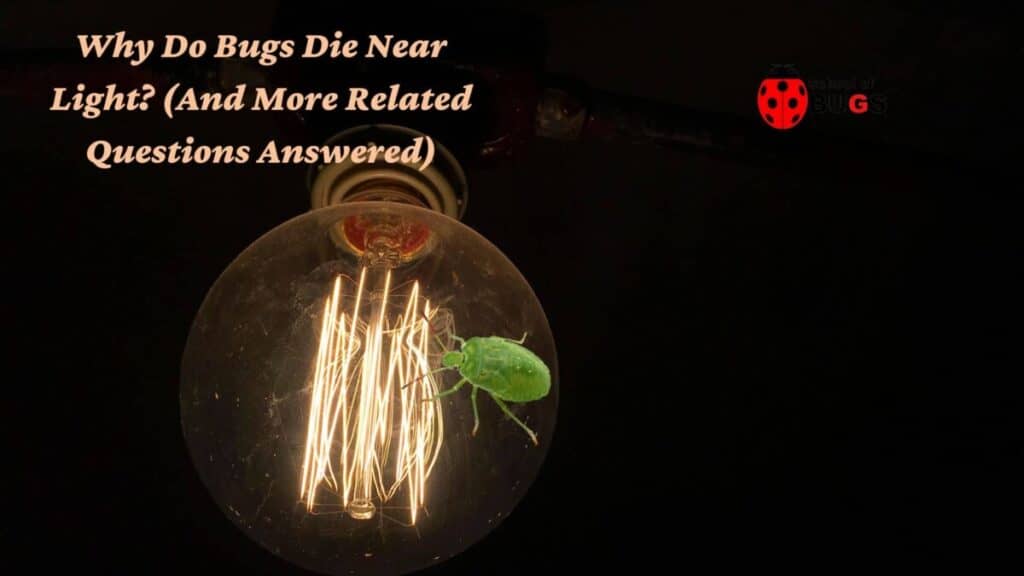
As the days get warmer, more and more bugs start coming out. And many of them seem to be ending up dead near lights, whether it’s the light bulbs in your home, street lights, or something else.
So what’s up with that? Why are so many bugs dying near lights? Today, we’ll try to answer this question.
Phototaxis or Why Bugs Are Attracted to Lights
Phototaxis is a word that sounds complicated, but it’s actually a fairly simple principle. Phototaxis refers to the tendency of various organisms (including many bugs) to orient themselves in the world according to external light sources.
Now, some insects tend to fly towards a light source, while others tend to fly away from it. You can read more about which bugs are attracted to light and why that happens here.
But what we are talking about today are the insects (typically nocturnal), that flock around your lights and then die. These bugs, like moths and certain types of flies, tend to be attracted to artificial lights.
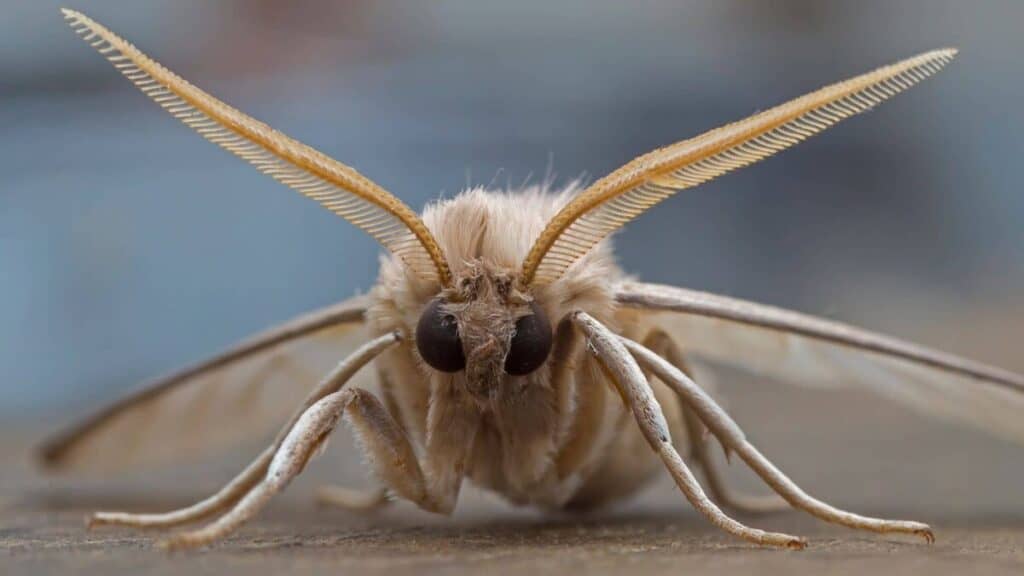
This is because these insects, in the natural world, orient themselves according to the moon. Now, they don’t typically try to fly to the moon, so why they try to fly into artificial lights, very persistently sometimes, is not yet fully explained by science.
However, it is thought that electric lights act as superstimulants that simply confuse the bugs. When they see a light, they simply cannot resist flying in its direction.
The thing is, our lightbulbs are typically much closer than the moon – which is unreachable – and that is something that these night bugs were simply not built to deal with.
Electric light bulbs only became common about 150 years ago. In other words, we created a world of light that many bugs simply aren’t equipped to deal with.
Why Do Bugs End Up Dying Once They Reach the Light
So, for one reason or the other, different types of bugs end up gathering around light bulbs at night. This is something we have all already seen many times.
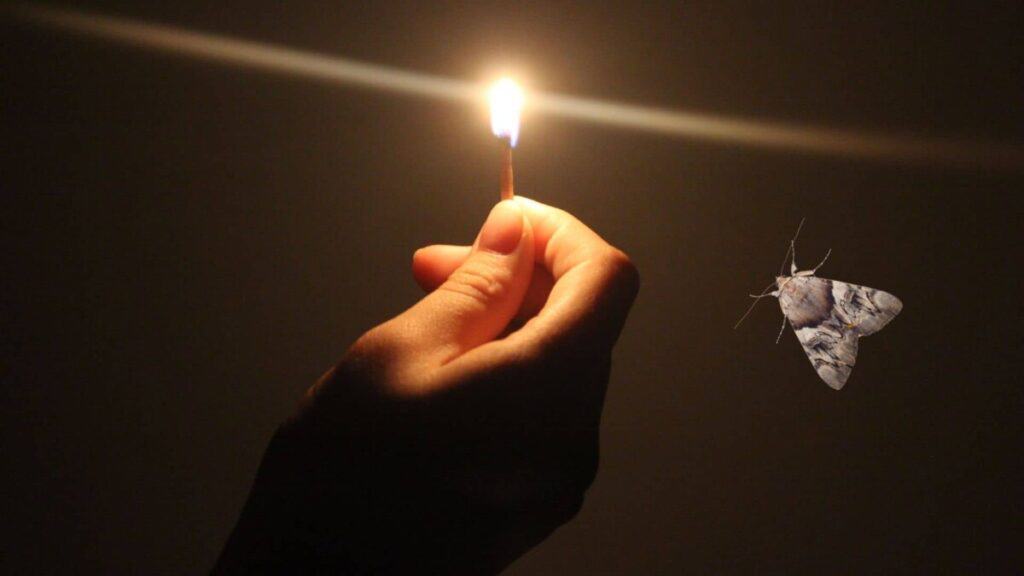
Some of these bugs will often end up dying. One typically finds them dead inside light fixtures, on the floor near lights, and even inside light bulbs themselves. So why does that happen?
One theory could be that bugs come to the light to die, but this is very unlikely. Most bugs are not very intelligent and expecting that they know they are dying and then decide to approach light is unrealistic.
Rather, it appears that lights end up killing the bugs. So how does that happen? Well, there are 3 possible reasons:
1) The heat kills them
Light bulbs, especially the old-school kind (incandescent light bulbs) can get really hot. Depending on the strength and type of lamp, the surface of the bulb can sometimes be more than 300 degrees Fahrenheit.
That’s really hot and more than enough to kill many bugs that fly into the light. LED lights don’t get very hot, though, so they probably don’t kill bugs with heat.
2) They are trapped or injured
Many bugs get trapped inside light fixtures. Depending on the shape of the lamp or light fixture, bugs can easily get stuck in spaces they cannot get out of.
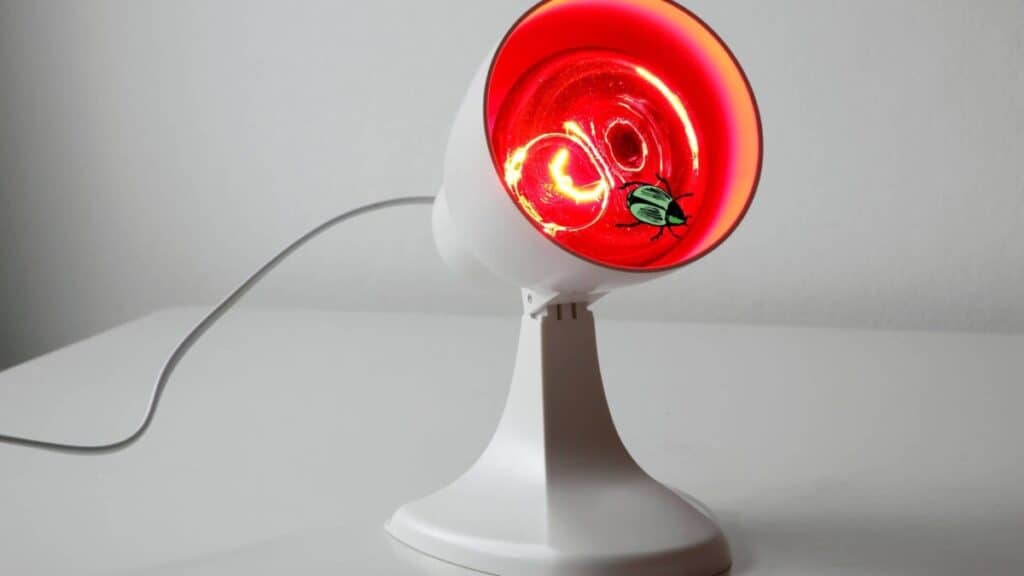
With a combination of heat and, simply, time, the bugs end up dying.
Bugs can also get injured from all the bumping into the light. If there is heat involved, it’s even worse. That certainly doesn’t help, and sometimes they are still drawn to the light. That’s why they die.
3) It’s simply their time to die
Many bugs don’t live very long. A housefly, for example, lives for only about a month.
Moths (the typical light-chasers) live anywhere from one month to six months. Since there are not so many days in their lives, it wouldn’t be too much of a coincidence that their time to die simply comes when they are near a lightbulb.
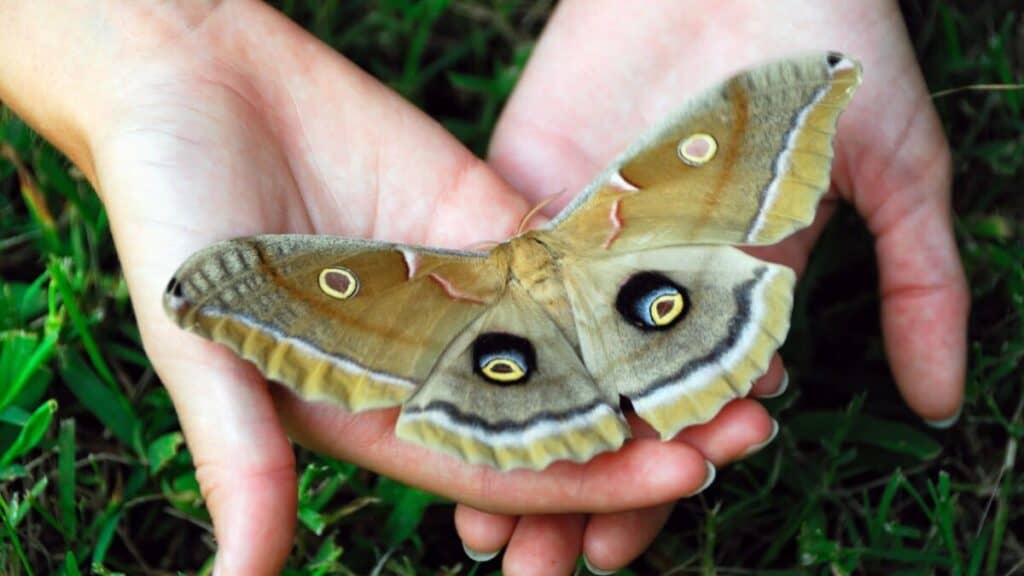
When we take into consideration that some bugs are drawn to lights and light to hang out around them, it just increases the chance of a bug dying from natural causes near a light.
Do All Lights Kill Bugs?
Some lights are more attractive to bugs than others. It’s probably about their vision spectrum: bugs don’t see the world the same as we do.
Now, not every bug has the same vision either, but most bugs are more likely to see lights that are ultraviolet, white, blue, or green.
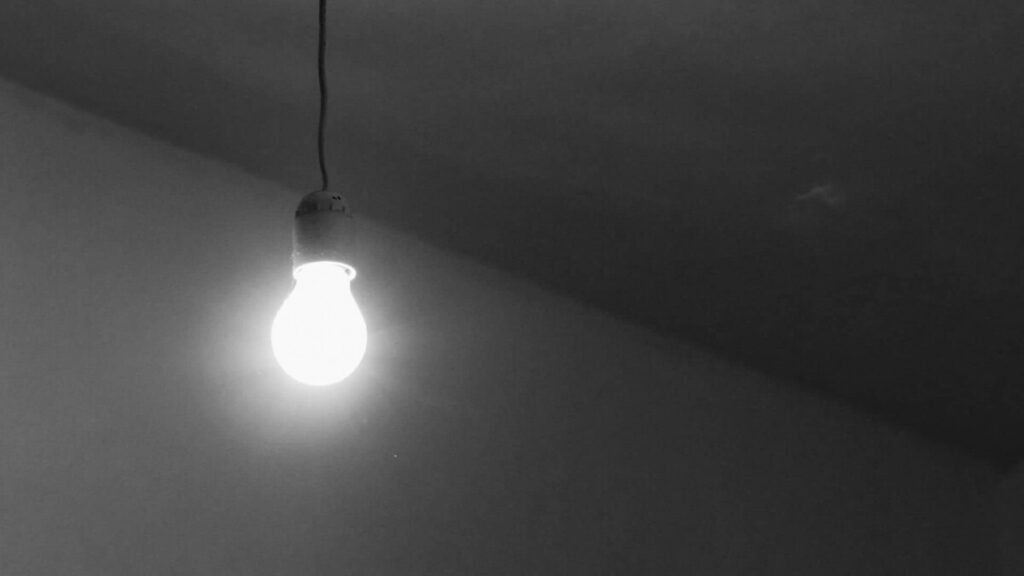
These will appear brighter in their world and attract them more. On the other hand, lights of yellow, orange, and red hues are less likely to attract bugs.
Now, whether the bug will be killed by the light fixture is another question. First things first, the type of light needs to be attractive to bugs.
Once they are attracted to the light, it might kill them by heat if the light bulb is the incandescent type that gets hot. If they get trapped inside the light fixture, bugs will also die.
In fact, there are bug lamps designed to take advantage of this phenomenon. They are created to attract bugs and kill them once they get in.
Can a Bug Die in a Light Bulb?

Some say it’s impossible, but there have been many reports of bugs actually getting into the lightbulb. How does this happen?
It’s somewhat of a mystery, but it appears that some bugs manage to find very tiny holes and get into light bulbs. Once they do, they can’t get out, and faced with the heat that the light bulb is creating, they will certainly die.
How Do Bugs End Up in Light Fixtures?
How do dead flies get inside closed light fixtures? These are some questions people often ask. The truth is, bugs must get in through some kind of hole.
The only other explanation would be having insect eggs inside the light fixture before it was installed, which is very unlikely.
When it comes to ceiling lights, it’s often the wires that are the culprit. Wires need to be pulled through an opening in the wall for lights to be installed, and this creates a perfect opportunity for bugs to get into the light fixtures.
Final Thoughts
So, why do bugs die near light? Do they come near lights to die? No they don’t. Is light deadly to bugs? That’s not it either. But there is a combination of factors that leads to many dead bugs around light fixtures.
First of all, there is phototaxis or the tendency of certain insects to navigate the world in relation to lights (which they interpret as the moon or the sun).
When these lights aren’t the moon or the sun, but an electric light, bugs get confused and end up bumping into your light fixtures.
Once this happens, there are various things that can end the life of the bug. Most of the time, it’s either too much heat or the inability to live the light fixture once they get inside.
Alright, that’s it for this article, here are a few hand-selected articles that you might also find interesting reads:
How to Stop Bugs from Coming Through Window Air ConditionerBugs in Kitchen at Night, Should I Be Worried?
What Can I Put on My Windowsill to Keep Bugs Away? (Three Minute Read)
Recent Posts
Tiny Black Bugs in Bathroom NO WINGS: What They Are and What to Do!
Finding tiny black bugs in your bathroom can be uncomfortable, to say the least. Especially if they are persistent, or they appear in very large numbers, which they often like to do. When it...
Tiny Black Bugs in Plant Soil - What Are They & What To Do About It
A short horror story: You get a new houseplant. You do your best to take care of it. You’ve ensured that it has the right soil, the right amount of sun, it gets enough water. And then one day, you...

